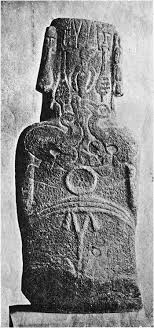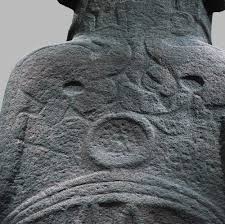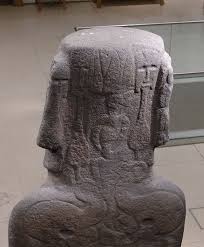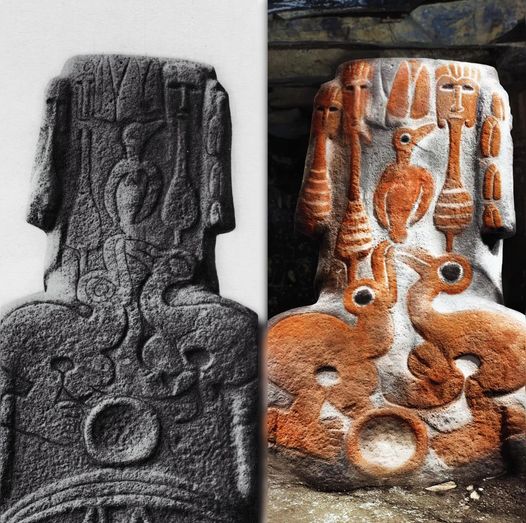Easter Island, a remote and mystical Pacific outpost, is home to one of the most intriguing archaeological wonders of the world – the colossal moai statues. These massive stone figures, carved with meticulous precision, have captivated the imagination of explorers, anthropologists, and travelers alike for centuries. As guardians of an ancient civilization, the moai statues continue to pose tantalizing questions about the ingenuity, beliefs, and ultimate fate of the Rapa Nui people who created them.
In this comprehensive blog post, we will delve into the rich history and fascinating mysteries surrounding the moai statues of Easter Island. From their monumental scale and distinctive features to the theories about their purpose and the demise of the Rapa Nui civilization, we will uncover the layers of intrigue that have made these enigmatic monuments a source of enduring fascination.
The Moai Statues: Guardians of Easter Island
Easter Island, also known by its Polynesian name Rapa Nui, is a small, triangular-shaped island located in the southeastern Pacific Ocean, approximately 2,300 miles off the coast of Chile. This remote and isolated landmass is home to one of the most remarkable and enigmatic archaeological sites in the world – the moai statues.

The moai are massive stone figures, ranging from 13 to 33 feet in height and weighing up to 82 tons. These colossal statues are primarily characterized by their large, elongated heads, which make up about a third of their total height. The moai were carved from volcanic rock, primarily tuff and basalt, and were meticulously crafted to depict the facial features and physical characteristics of the Rapa Nui people’s ancestors and important leaders.
One of the most distinctive features of the moai is the intricate carvings found on the backs of some of the statues. These carvings often depict two facing birdmen, or “tangata manu,” with human hands and frigate bird heads. In the center of these birdmen carvings, a fledgling bird is sometimes featured, adding to the symbolic and spiritual significance of the imagery.
Additionally, the moai statues are sometimes adorned with ceremonial dance paddles, known as “ao,” which are carved into the stone. These paddles are often decorated with human faces, further emphasizing the connection between the moai and the Rapa Nui people’s ancestral and cultural traditions.
The Moai Construction and Transportation: An Engineering Marvel
The construction and transportation of the moai statues are considered one of the greatest engineering feats of the ancient world. The Rapa Nui people, with limited resources and technology, managed to carve, move, and erect these colossal figures across the island, a testament to their ingenuity and organizational prowess.
The moai were carved from the volcanic rock of Rano Raraku, a quarry located in the island’s interior. Using stone tools and ropes, the Rapa Nui people meticulously chipped away at the rock, shaping the figures with great precision and attention to detail. The largest moai ever carved, known as Paro, stands at an impressive 33 feet tall and weighs an estimated 82 tons.

Once the moai were carved, the next challenge was to transport them to their final resting places across the island. Archaeologists have proposed several theories about how the Rapa Nui people accomplished this feat, including the use of wooden sleds, log rollers, and even the construction of earthen ramps to move the statues.
One of the most intriguing theories suggests that the moai were “walked” to their destinations using a process known as “walking the moai.” This method involved the use of ropes and teams of workers who would rock the statues back and forth, gradually inching them forward. The evidence for this technique can be seen in the distinctive “footprints” left behind by the moai as they were moved across the island.
The final step in the construction of the moai was the erection of the statues on stone platforms, known as ahu. These ahu were carefully constructed to serve as the foundations for the moai, providing a stable and elevated base for the colossal figures. The process of erecting the moai was no less impressive than their transportation, requiring the coordination of hundreds of workers and the use of ingenious engineering techniques.
The Meaning and Purpose of the Moai Statues
The moai statues of Easter Island are not merely impressive feats of engineering; they are also imbued with profound cultural and spiritual significance for the Rapa Nui people. The moai were believed to represent the island’s ancestral leaders and deities, serving as a physical embodiment of the Rapa Nui’s connection to their past and their place in the world.
One of the primary theories about the purpose of the moai is that they were created as a means of honoring and communicating with the Rapa Nui’s ancestors. The large, elongated heads of the statues were believed to be symbolic representations of the island’s revered leaders, who were seen as intermediaries between the living and the spiritual realm.

The intricate carvings on the backs of some moai, depicting the “tangata manu” or birdmen, are thought to be related to the Rapa Nui’s belief in a powerful deity or cult associated with the frigate bird. This birdman cult was a central aspect of the Rapa Nui’s religious and cultural traditions, and the carvings on the moai may have served as a visual representation of this belief system.
Additionally, the ceremonial dance paddles, or “ao,” carved into the moai were likely used in rituals and ceremonies that were an integral part of the Rapa Nui’s social and spiritual life. These paddles, adorned with human faces, further emphasize the connection between the moai and the Rapa Nui’s ancestral and cultural heritage.
The Decline of the Rapa Nui Civilization
The Rapa Nui civilization, which thrived for centuries and created the magnificent moai statues, ultimately met a tragic end. The factors that led to the decline and collapse of this once-prosperous society have been the subject of much debate and speculation among scholars.
One of the leading theories about the downfall of the Rapa Nui civilization is environmental degradation. The island’s limited resources and fragile ecosystem were likely overwhelmed by the demands of the growing population and the extensive construction of the moai. Deforestation, soil erosion, and the depletion of natural resources may have contributed to the collapse of the Rapa Nui’s agricultural and social systems.

Another theory suggests that the Rapa Nui people were victims of their own success, as the construction of the moai statues became an increasingly resource-intensive endeavor that ultimately led to the depletion of the island’s resources and the breakdown of its social structure.
The arrival of European explorers in the 18th century also had a devastating impact on the Rapa Nui civilization. Diseases, slavery, and the disruption of the island’s traditional way of life all contributed to the rapid decline of the population and the erosion of the Rapa Nui’s cultural and social fabric.
Today, the moai statues stand as silent witnesses to the rise and fall of the Rapa Nui civilization, serving as a poignant reminder of the fragility of human societies and the importance of sustainable resource management and environmental stewardship.
Conclusion
The moai statues of Easter Island continue to captivate and intrigue people from around the world. These colossal monuments, carved with such precision and skill, are a testament to the ingenuity and cultural richness of the Rapa Nui people. As we continue to unravel the mysteries surrounding the moai and the Rapa Nui civilization, we gain a deeper understanding of the resilience and adaptability of the human spirit in the face of adversity.

The moai statues serve as a powerful reminder of the importance of preserving and honoring the cultural heritage of indigenous peoples, and the valuable lessons we can learn from their experiences. By studying the Rapa Nui’s relationship with their environment, their spiritual beliefs, and their social structures, we can gain valuable insights that can inform our own approach to sustainable development, cultural preservation, and environmental stewardship.
As we stand in awe of the moai statues, we are reminded of the enduring power of human creativity, the resilience of the human spirit, and the profound connections that bind us to our past, our present, and our future. The enigmatic moai of Easter Island will continue to captivate and inspire generations to come, serving as a testament to the boundless potential of the human mind and the enduring legacy of the Rapa Nui people.
